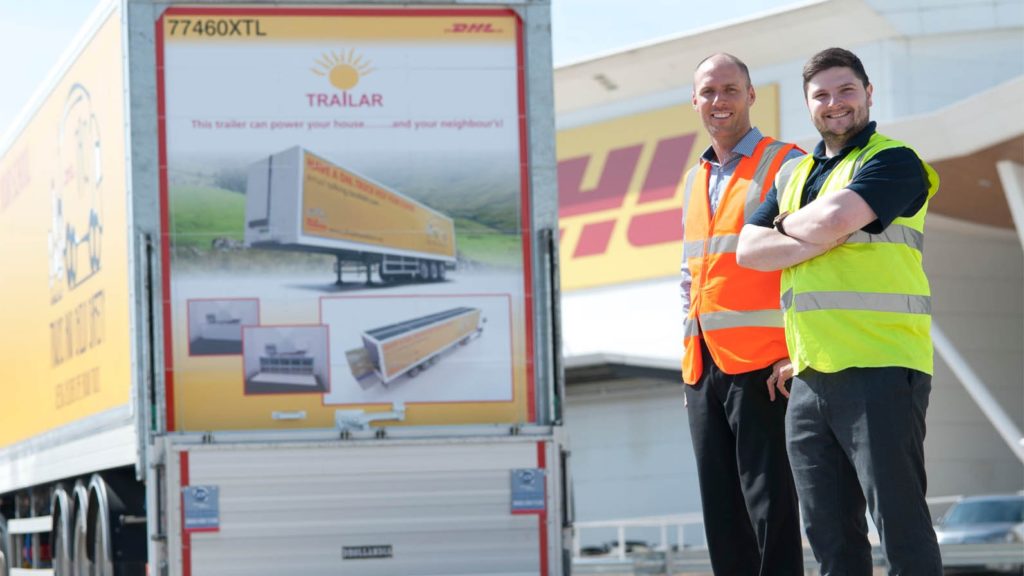Deutsche Post DHL Group has launched Trailar, a new fuel conservation technology for road transport based on lightweight and durable photovoltaic modules.
Trailar uses advanced solar technology by applying thin film, flexible solar matting to the roofs of rigid vehicles, which are connected to the vehicle battery or additional onboard batteries. Harvested solar energy is used to power tail lifts and all ancillary equipment such as air conditioning. This reduces carbon emissions and lowers fuel consumption by 5%, while increasing engine efficiency and longevity at the same time.
Thomas Ogilvie, Deutsche Post DHL Group board member for human resources and corporate incubations, said, “Our Trailar solution is a key contributor to our GoGreen program and takes us a big step forward toward our goal of becoming the zero-emissions logistics leader by 2050.
“However, while we are improving our environmental footprint, we also want to increase our corporate success. Trailar is another great proof point for the fact that cost and emission reductions are not mutually exclusive, but can complement each other.”
The technology was co-developed by Deutsche Post DHL Group and Don-Bur, a manufacturer of commercial vehicle trailers in the UK. After successful trials with DHL Supply Chain’s fleet in the UK, Trailar will be running further tests with DHL’s SmarTrucking initiative in India, with a view to adding it to its future fleet of vehicles. A global roll-out within Deutsche Post DHL Group and to external fleet operators has begun and will help turn transport solutions green in the coming years.
Aaron Thomas and Denny Hulme, co-founders of Trailar, together commented, “Trailar is a sustainable, efficient and cost-effective solution which makes a significant contribution to reducing emissions from road transport.
“We have developed a solution which implements the latest solar technology onto new and existing vehicles, so that our customers can operate more cleanly and efficiently. It helps the road transport industry adjust to a future with higher fuel prices and stricter emissions regulations.”


